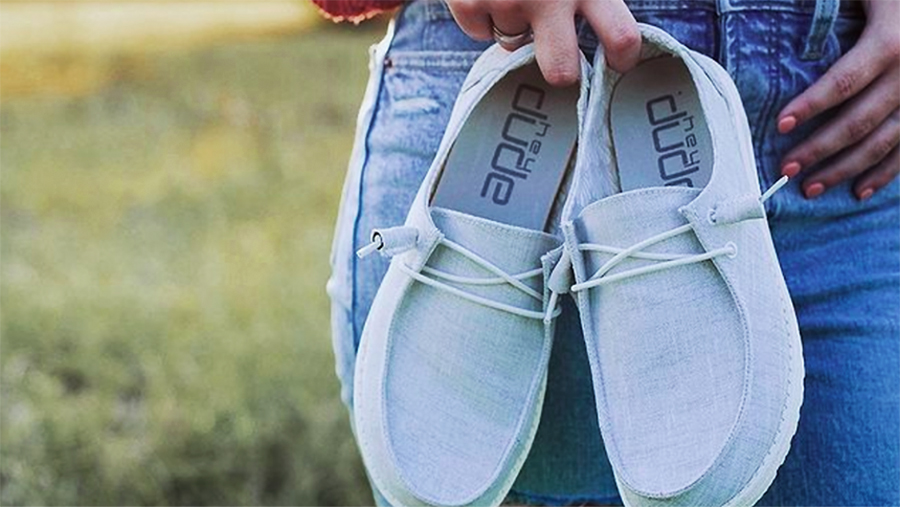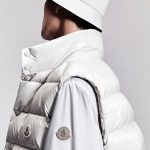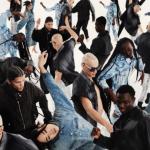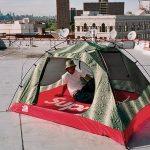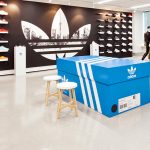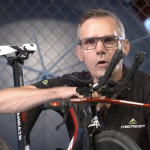In a session at the 2023 ICR Conference, Crocs Inc.’s CEO Andrew Rees said the return of significant new product introductions for both the Crocs and HeyDude brands is expected to stimulate growth in 2023 after innovation efforts were challenged over the pandemic.
“I think one of the headwinds of the pandemic that we’ve all sort of been going through for the last several years is it’s been really hard and difficult to drive very strong product innovation and new product introductions,” said Rees. “You’re always kind of making some trade-offs between the ‘Do I do the tried and tested?’ or ‘Do I try something new?’ And in an uncertain environment, you’re kind of biased towards the tried and tested. So we’ve really put the foot on the gas relative to new product introductions, new innovations that we’re bringing to the marketplace and to marketing innovation.”
He said the new innovations started to reach the marketplace in the second half of 2022 and “will accelerate into this year.”
Prior to the presentation, Crocs said it expects 2022 revenues to surge approximately 53 percent year over year to roughly $3.55 billion, just ahead of previously guided growth in the range of 49 percent to 52 percent.
Full-year 2022 non-GAAP operating margin is estimated at approximately 27 percent. Crocs also noted that it reduced borrowings by $300 million during the fourth quarter and by approximately $500 million overall since acquiring HeyDude in February 2022.
For the fourth quarter, sales are expected to grow approximately 60 percent against a year ago.
For the current year, CROX expects revenue growth in the range of 10 percent to 13 percent compared to 2022, resulting in full-year revenues of approximately $3.9 billion to $4.0 billion at current currency rates.
At the ICR event, Rees said the Crocs brand grew 15 percent in 2022 to $2.65 billion, or 19 percent on a constant-currency basis. Rees remarked, “A really strong performance for Crocs.”
HeyDude brand generate revenues of $890 million for the company. On a pro-forma basis including sales in the months prior to the acquisition, sales increased 70 percent to nearly $1 billion. Rees noted that HeyDude continues to outperform with management initially estimating pro-forma sales in the range of $700 million to $750 million when the acquisition was first announced. Rees said, “It continues to outperform in terms of its growth, in terms of its consumer resonance, and in terms of our perspectives on where we think you can go in the future.”
Much of Rees’ presentation focused on the benefits from the HeyDude acquisition, including expanding the company’s total addressable market to $160 billion out of the total $305 billion non-athletic footwear market. Rees said, “That’s made up of those casual silhouettes that HeyDude really leans into strongly, as well as sandals and as well as clogs that obviously the core backbone for Crocs.”
The acquisition has also helped the company become “much more diversified” with Hey Dude now making up 27 percent of sales while also offering diversification across geography, product silhouette and channel. In product, clogs now makes up 55 percent of Crocs Inc.’s sales with other silhouettes making up 45 percent. Among channels, digital makes up 37 percent of sales and DTC now accounts for 45 percent.
In geography, international now makes up 28 percent of sales. International makes up less than 5 percent of HeyDude’s sales to represent a largely untapped growth opportunity. For the Crocs brand, international contributes about 38 percent of sales.
At $3.55 billion in sales, Crocs Inc. now ranks as the second largest casual footwear company in the world, behind Skechers and moving ahead of Deckers and Wolverine World Wide due to the HeyDude acquisition.
Both brands are also aligned with consumer trends to support growth in the future, including the trend around casualization.
Rees said the casualization trend has seen a “very long run,” but was accelerated by the pandemic and is a global movement. He said, “People are getting more casual in terms of how they dress that’s a global trend. And that’s allowing companies like the brands that we have really to benefit from ongoing casualization.”
He also said consumers are increasingly looking for more comfort. Rees said, “They’re not prepared to make the sacrifices for fashion or for other reasons.”
Other favorable trends for both brands include the emphasis on sustainability with the Croc brand setting a goal to become carbon neutral by 2030. Finally, personalization remains a strong trend that the Crocs brand has tapped into with its Jibbitz charms.
Outside bringing greater innovation to the marketplace across both brands, other near-term catalysts are seen as expected growth in 2023 in all regions, led by international markets. Hey Dude’s growth is expected to be aided by expansion in new and existing wholesale accounts in the U.S., as well as expansion internationally.
The company is expected to continue to invest “very strongly” in marketing to support Crocs brand’s growth and amped-up marketing investments are planned for HeyDude. A particularly strong marketing emphasis will be placed on the Crocs brand’s sandal business. Rees said he suspected the sandal business “suffered from that new product introduction void during the pandemic. And we’re very excited about what we see coming through the sandal business with accelerated marketing.”
Photo courtesy Hey Dude

